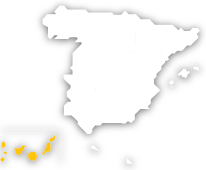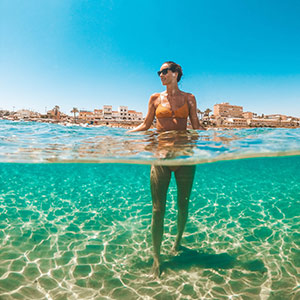
This will cheer you up: there’s a place in Spain where you can enjoy spring sunshine and warm weather all year round. Get ready for a holiday on the Canary Islands. Here, autumn and winter weather is as lovely as spring because the average annual temperature is around 22 degrees centigrade. You can expect nine to ten hours of sunshine a day, volcanic landscapes to explore, and some of Europe’s best beaches.
-
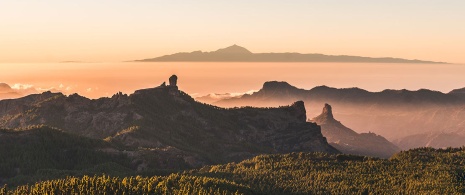
A perpetual spring paradise on eight islands
Let us introduce the eight Canary Islands: Gran Canaria is often called a miniature continent. Tenerife can boast two UNESCO World Heritage sites. Lanzarote is a unique island of black and red volcanic terrain and otherworldly landscapes. Fuerteventura is beaches and sea, long sand dunes and a windsurfers’ paradise. La Palma is the greenest of all of them, known as “the Beautiful Island”. On La Gomera you’ll find places that seem mystical and mysterious - they call it the Magical Island. El Hierro is 100% sustainable and completely self-sufficient in renewable energy. And La Graciosa is a small, practically untouched island.
-
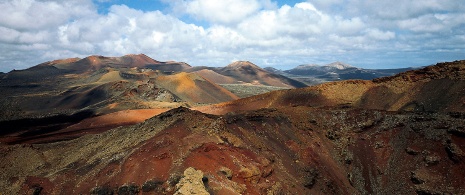
Feeling free in nature
The islands are strongly associated with nature in all its facets. Whether it’s their volcanic origin, the combination of arid landscapes, leafy forests and sandy beaches, the wealth of biodiversity, or just because the good weather makes everything look more beautiful. The reality is that on the Canary Islands, nature is enchanting. You can see for yourself in their four National Parks (Teide, on Tenerife; Caldera de Taburiente, on La Palma; Garajonay, on La Gomera; and Timanfaya, on Lanzarote) or on any of the islands, because they all have large parts of their territory listed as UNESCO Biosphere Reserves.
-
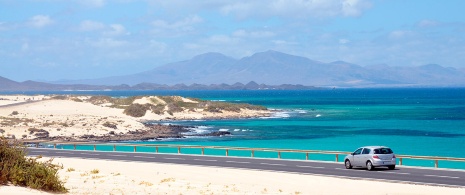
Beaches for rest and relaxation
It’s warm and sunny - of course, you’re in the Canary Islands. Now you just have to choose your beach and enjoy delightful sensations like walking barefoot in the sand, spending hours sunbathing, or taking a dip in the revitalising ocean waves. You’ll find long beaches of light sand that look like deserts next to the sea, like the ones in Corralejo Natural Park (Fuerteventura) or Maspalomas (Gran Canaria). And dark sand beaches that recall their volcanic origin, like Charco Verde (La Palma) or Playa del Inglés (La Gomera). On some you can swim without waves or currents because they are natural pools protected by rocks, such as Charco Azul (El Hierro) or Charco de La Laja (Tenerife). Some are city beaches, especially convenient for families, like Las Canteras (Gran Canaria) or Las Teresitas (Tenerife). Others are more isolated, unspoilt and almost untouched, like Cofete (Fuerteventura) and Famara (Lanzarote). You can find them on the Canary Islands Tourist Board website.
-
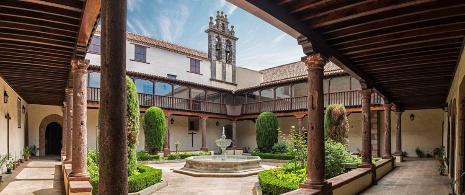
Cultural visits to round off the day
These islands are full of pleasant surprises. For example, did you know there was a World Heritage City on Tenerife? It’s San Cristóbal de La Laguna: a stroll around the streets is enough to feel the peaceful, easy-going pace of life on the Canary Islands. Its architecture is a fine example of the Spanish colonial style you’ll see everywhere on the islands. On Gran Canaria, we suggest taking the archaeological tour in the north of the island (between Galdar, Guía and Agaete) to learn about the ancient inhabitants. The fusion of architecture and nature created by César Manrique is the star experience in Lanzarote, with spaces like the Cactus Garden, Mirador del Río and Jameos del Agua. On El Hierro, Manrique’s work can be seen in Mirador de la Peña, with amazing views. And on La Gomera, you can hear a fully developed whistled language which is still used by local people. This is silbo gomero, and is recognised by UNESCO as part of the world’s Intangible Cultural Heritage.
-
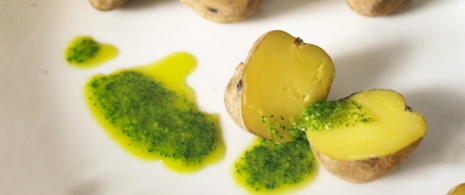
Bold, happy flavours
If eating is a pleasure, on the Canary Islands it’s more true than ever. First, because you’ll have plenty of opportunities to eat outdoors, with gentle sunshine and mild temperatures. Second, because the local cuisine is delicious, light and exotic. For example, the huge variety of tropical fruit, like bananas from the Canary Islands (if you haven’t tried them, you don’t know how tasty they can be), papayas, mangos, and many more, which are used to make delicious juices. Some dishes seem simple, like papas arrugadas or “wrinkled potatoes”, delicious dipped in the traditional mojo sauce. Try traditional local specialities like vieja al horno (baked fish), lapas con mojo (limpets) or cabrito asado (roast kid). Every meal is accompanied by local cheeses and wines, and rounded off with a dessert made with gofio flour. These are meals that make everyone happy!
